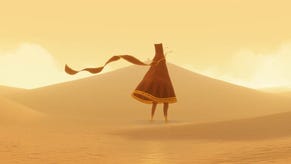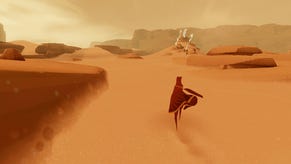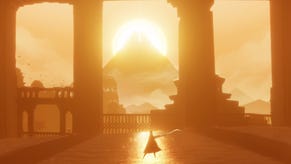Journey
A line in the sand.
A games industry press event is not a good place for quiet contemplation. For Sony's PlayStation Experience, a raft of boisterous blockbusters have been crammed into a converted tram shed in Hackney. Each adds its own combination of explosions, gunshots and super powered slam attacks to the cacophony.
Resistance 3 and Killzone 3 are bellowing away mere feet away from DC Universe, while SOCOM Special Ops and inFamous 2 try to outdo each other. Any lull in the aural onslaught is filled with dance music piped over the speakers.
There is, however, a cordoned-off oasis for the weary, tinnitus-addled games journalist. Shielded by sound-soaking curtains, positioned inside pristine white walls decorated with serene concept art, Journey waits to soothe the savage beast.
There's a zen-like calm here, in direct contrast the sturm und drang elsewhere. While the AAA titles are hammering away, this prime marketing space has been set aside for just one game, a downloadable title at that, and one which is striking out in the exact opposite direction to its show floor peers.
Journey is the latest offbeat offering from thatgamecompany, the Californian studio responsible for such chilled out gaming experiences as flOw and Flower. Talking us through the game are designer Jenova Chen and producer Robin Hanicke, and it soon becomes clear why such a separate space was necessary.
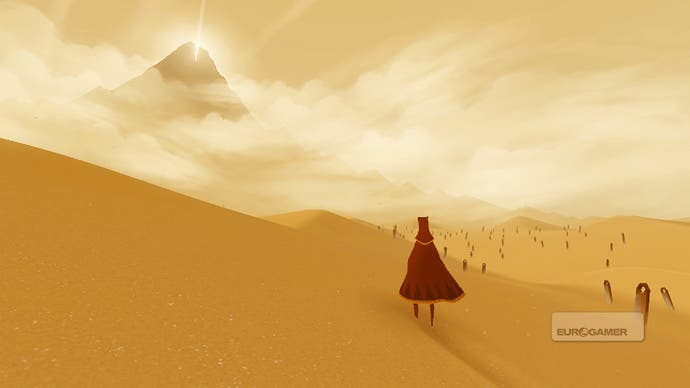
Not only is the game typically graceful and contemplative, but Chen is so soft spoken that it later turns out that most of his words are little more than a whisper on my digital recorder. Luckily, what he has to say about game design is distinctive enough to stick in the mind.
Hanicke helps out with expressive (and apparently subconcious) hand gestures to help illustrate Chen's points. He talks about flying and her hands instinctively start fluttering. It's part interpretive dance, part sign language. It also provides a rather neat segue into Journey itself, a game built around physical communication and silent collaboration.
At its most fundamental level, Journey is incredibly simple. The game starts with the player as a delicate masked stranger, in the middle of a desert. There's nothing else around, apart from a curious mountain in the distance. Getting there is the goal of the game.
Chen explains the thinking behind this sparse design by once again inverting traditional videogame power fantasies. Most games focus on the joy of becoming stronger and tougher, a constant self-fulfilling escalation that can easily tip into mindless grind.
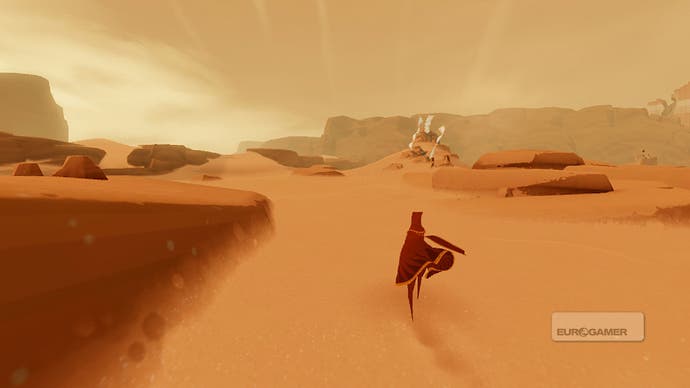
For Journey, the aim was to instead create a game based around the opposite of empowerment, where you were essentially helpless, lost and uncertain, and in doing so evoke a natural sense of wonder and discovery.
Key to that mood is the environment, barren and mysterious yet strangely enticing. Where Flower was a game about air, Journey is a game about sand, and a lot of time has been spent getting the tactile feel of the game just right.
As Chen guides his mysterious avatar up the dunes, the trail of footprints he leaves behind sags and settles as if made from millions of grains rather than pixels. At the top of the dune, he slides down the other side, carving a furrow through the desert surface.
Good old human curiosity provides your signposting, always tugging you to see what that curious ruin in the distance might hold or what the unusual silhouette over the next ridge could be. It's lovely, and incredibly inviting.






